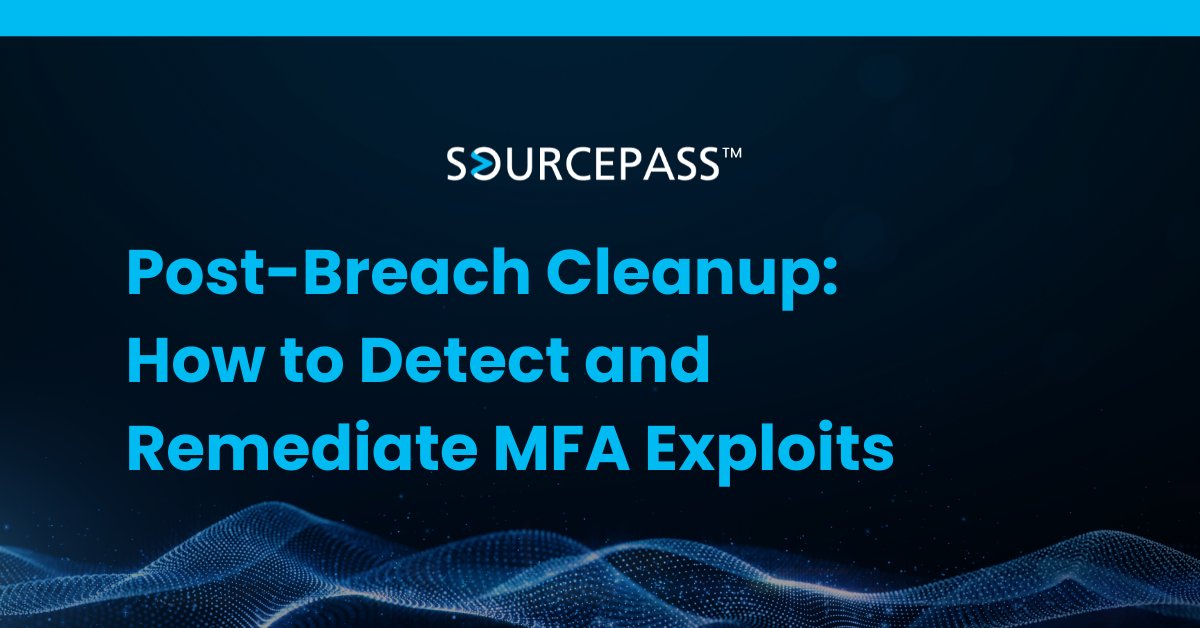Post-Breach Cleanup: How to Detect and Remediate MFA Exploits
Aug 25, 2025 Alex Davis Security & Compliance | Cybersecurity 2 min read



Even with strong cybersecurity defenses, no system is completely immune to compromise. Attackers are constantly developing new ways to bypass multi-factor authentication (MFA), especially when organizations rely on outdated methods such as SMS or app-based codes. Once they gain access, attackers often manipulate MFA settings and Microsoft 365 configurations to maintain persistence and expand their control.
This article explains the most common attacker behaviors following a breach and provides actionable steps to detect and remediate MFA exploits effectively.
How Attackers Exploit MFA After a Breach
When attackers bypass MFA, they typically move quickly to establish long-term access. Common tactics include:
-
Registering Additional MFA Methods: Attackers add their own phone numbers, devices, or app registrations so they can continue to log in even if passwords change.
-
Creating Malicious OAuth Applications: By granting themselves third-party app permissions, attackers can maintain access to data and mailboxes without needing credentials.
-
Setting Up Inbox Rules: Rules may be added to hide security alerts or forward sensitive emails to external accounts.
-
Privilege Escalation: Attackers attempt to gain administrative rights, increasing their ability to disable protections or exfiltrate large amounts of data.
These activities can go undetected unless organizations are actively monitoring their Microsoft 365 environment.
Detecting MFA Exploits in Microsoft 365
Proactive monitoring is essential for identifying malicious activity. Organizations should:
-
Audit MFA Methods Regularly
Review all user accounts for unauthorized MFA registrations. Remove or block suspicious devices immediately. -
Monitor OAuth Applications
Check for newly registered or unfamiliar third-party apps. Malicious OAuth applications often request excessive permissions to access mail, files, or calendars. -
Use Microsoft Defender for 365
Enable alerts for unusual sign-in activity, risky app behavior, and mailbox manipulation. Defender’s automated investigations can help detect anomalies faster. -
Review Audit Logs in Microsoft Entra
Look for suspicious changes in authentication methods, user roles, or app permissions.
Remediation Steps After an MFA Exploit
Once a compromise is detected, immediate action is required:
-
Revoke Unauthorized MFA Devices: Remove attacker-registered devices and require re-enrollment for legitimate users.
-
Block Malicious OAuth Applications: Disable or delete applications with suspicious access rights.
-
Reset Credentials and Sessions: Force password resets and revoke all active sign-in sessions to cut off attacker access.
-
Implement Conditional Access Policies: Require phishing-resistant MFA (FIDO2 keys, passkeys) and compliant devices for login.
-
Limit Third-Party App Permissions: Restrict which users can consent to applications and enforce admin approval for high-risk permissions.
Reducing Risk Before a Breach Occurs
Post-breach cleanup is critical, but prevention is even more effective. To minimize exposure:
-
Deploy phishing-resistant MFA across all privileged and high-sensitivity accounts.
-
Enforce least privilege access, ensuring users only have the permissions they need.
-
Enable automated detection and response with Microsoft Defender and advanced Microsoft 365 licenses.
-
Train employees to recognize and report suspicious login prompts or MFA notifications.
Conclusion
MFA is essential for modern security, but attackers are finding new ways to exploit it once they breach an environment. By understanding attacker behaviors—such as registering new MFA methods, adding OAuth applications, and creating inbox rules—organizations can detect compromises earlier and respond more effectively.
Strong monitoring, rapid remediation, and the adoption of phishing-resistant MFA combined with conditional access policies will significantly reduce the risk of long-term compromise.
Subscribe To
Sourcepass Insights
Sourcepass Insights
Stay in the loop and never miss out on the latest updates by subscribing to our newsletter today!
.png?width=500&height=100&name=White%20Logo%20-%20Transparent%20Tag%20(3).png)



